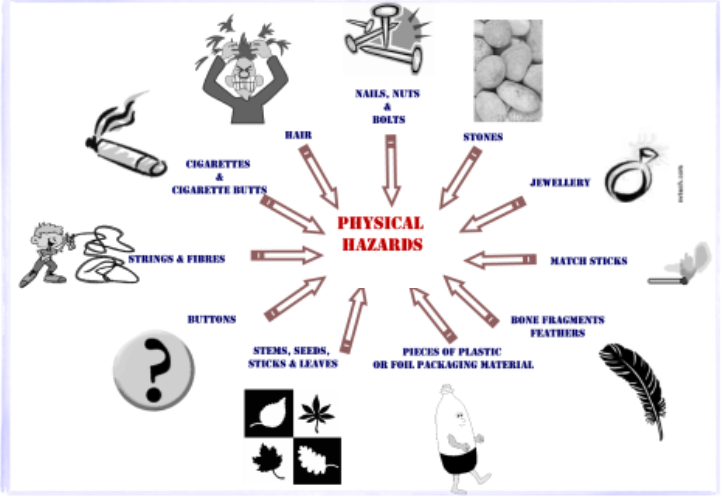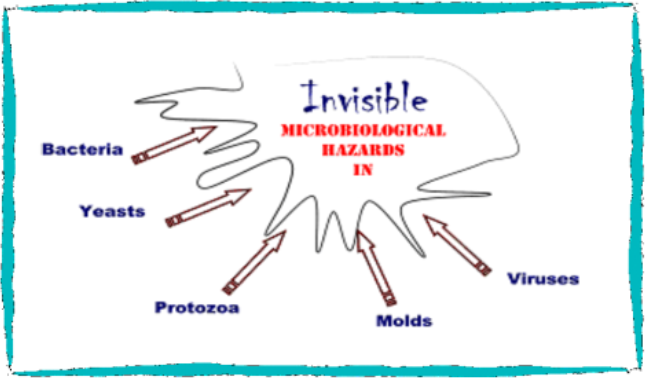Food Safety and Quality
With reference to agricultural enterprise refers to protecting the food supply from microbial, chemical (i.e. rancidity, browning) and physical (i.e. drying out, infestation) hazards or contamination that may occur during all stages of food production and handling-growing, harvesting, processing, transporting, preparing, distributing and storing. The goal of food safety monitoring is to keep food wholesome.
Different Types of Risk Factors in Food Safety
Chemical Hazards:
Residue monitoring and evaluation programs identify animals containing harmful residues and remove them from the food chain. These residues include toxins from natural sources, from pesticides, feeds, or from antibiotics administered to animals too soon before slaughter.
A number of agricultural chemicals (pesticides, herbicides, and fertilizers) may leave potentially hazardous residues in foods, and chemical contamination during manufacture is also possible. Where compounds that might enter the food chain, are known or believed to be hazardous, there are limits on the maximum amount that may be present in foods. This acceptable daily intake is set by determining the highest lifetime level of intake that causes no detectable effect and dividing it by a safety factor of 100.
Pesticides
All crop protection products must be approved for their intended use. They should only be used in accordance with the manufacturer’s instructions and any relevant codes of good practice should be observed. Compliance with ‘harvest intervals’ should be ensured.
Pesticides (including herbicides, fungicides and wood preservatives) should be stored in an appropriate well ventilated and secure area. This area should be constructed in such a manner as to contain spillages in the case of accidents. They should be kept in the original container and not transferred to e.g. unmarked containers such as drink bottles.
Appropriate protective clothing and masks should be worn when handling, mixing or using these products, as indicated on the label of the product.
Other Farm Chemicals
These include detergents, sterilisers/cleaning agents, disinfectants, feed additives, fertilisers, fuel oils, lubricants etc.
As with pesticides, all other chemicals must be handled, stored, used and disposed of in a manner that minimises the risk of contamination of primary food produce or animal feed as well as the risk of accidental ingestion/uptake by animals/crops.

Physical Hazards

Apart from the physical hazards given above, dust must also be considered. After packing and during transporting dust must be prevented to contaminate food products.
Micro-Biological Hazards

Bacteria and fungi (yeasts and moulds) are the principal types of micro-organisms that cause food spoilage and food-borne illnesses. Foods may be contaminated by microorganisms at any time during harvest, storage, processing, distribution, handling, or preparation. The primary sources of microbial contamination are soil, air, animal feed, animal hides and intestines, plant surfaces, sewage, and food processing machinery or utensils.
